Do you want to get more mileage from Twitter? Curious how your business can create a loyal community and engage more authentically?
In this article, you'll discover three tips for improving your overall brand presence and perception on Twitter.
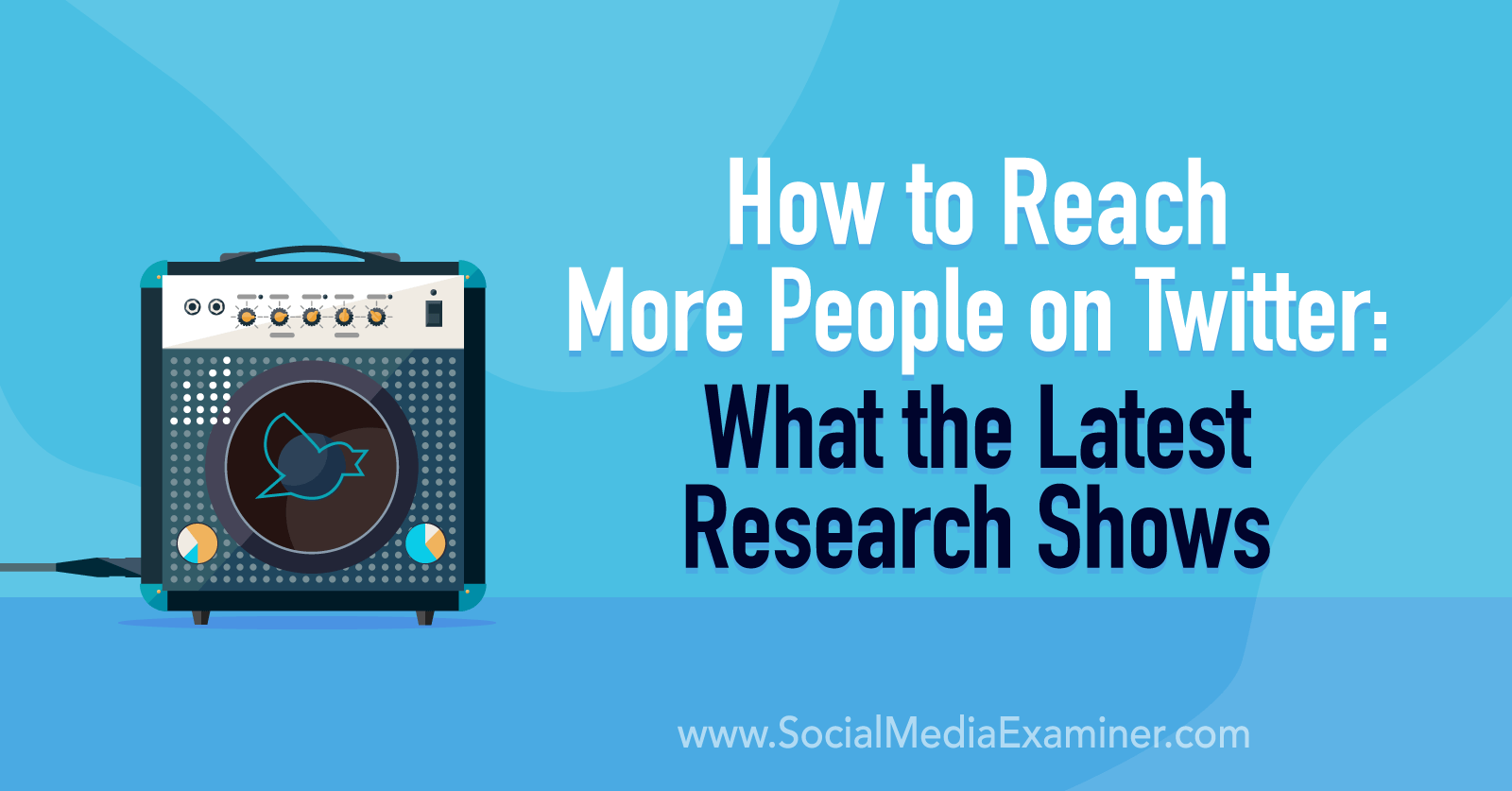
What Is Twitter's #RealTalk Report?
Released by Twitter in January 2022, #RealTalk explores how Twitter users perceive brands' behavior across the social media channel and how these attitudes have evolved. It's designed to help businesses understand what customers expect from them on Twitter and how to establish a presence that's simultaneously authentic and on-brand.
To compile the data for #RealTalk, Twitter Next evaluated more than 5,000 tweets about brands to pinpoint trends. As unprompted, organic tweets spanning 10 years, this content offers an unfiltered look at how users have talked about brands over the past decade.
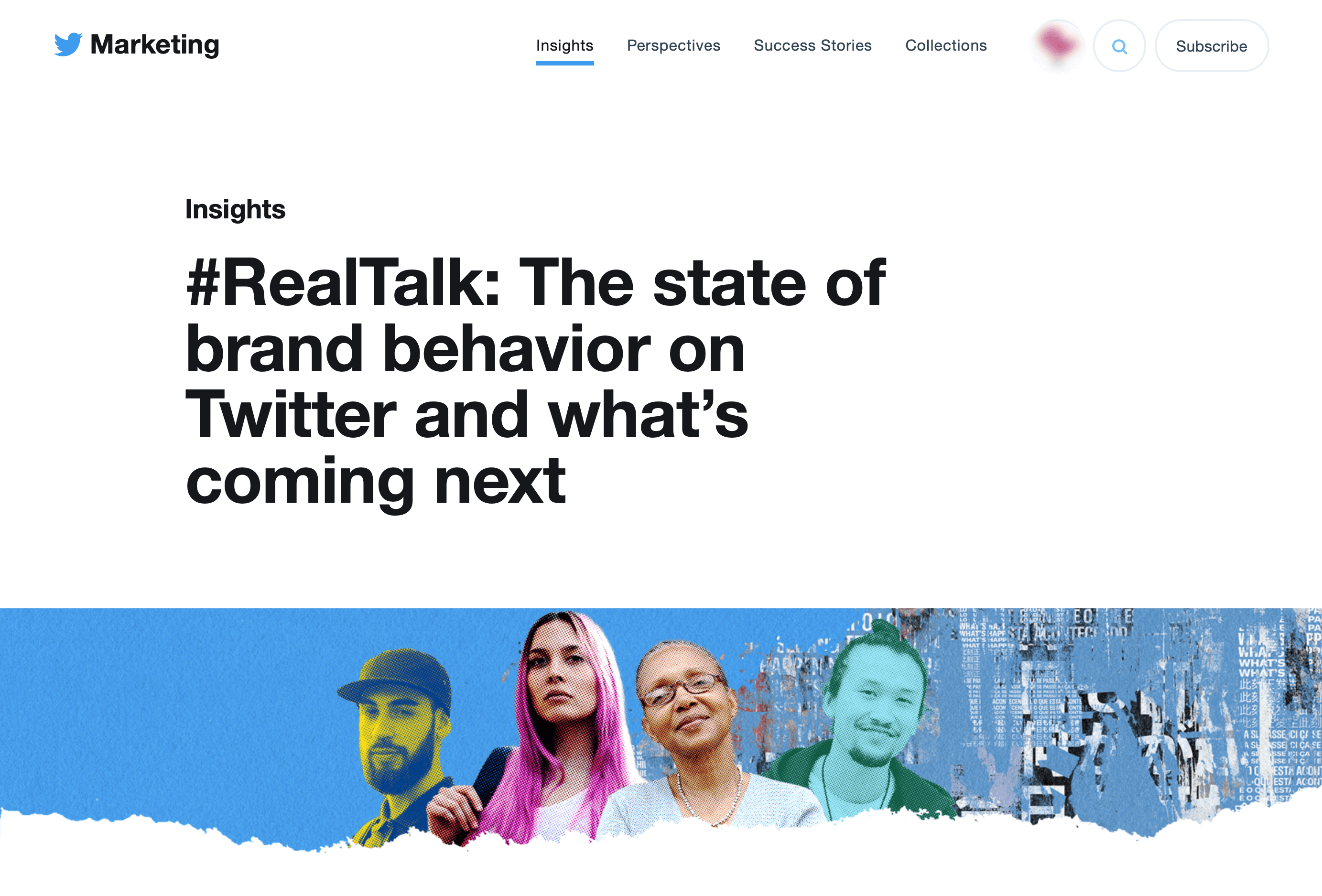
To test these trends in eight countries across the globe, Twitter also worked with research and strategy firm Sparkler. With these tests, the social channel sought insight into how various cultures affect users' perceptions of brands.
Twitter then collaborated with data science firm Pulsar Consulting to review 3 years' worth of tweets by 20 major international brands. With this analysis, the social channel sought to understand how brands' behavior has changed over time.
What Key Points Does #RealTalk Reveal?
In recent years, people have seen and engaged with marketing messages much more than they did in the past. As the #RealTalk report states, engagement with brands on Twitter increased significantly in every category between 2019 and 2020:
- Retweets increased 20%
- Tweets increased 23%
- Quote tweets increased 35%
- Replies increased 44%
For most people, interacting with brands is an essential part of the Twitter experience. Seventy percent of respondents confirmed that Brand Twitter was one of the highlights of the social channel. Even more (80%) reported that they don't mind when brands sell to them on social media—as long as the experience is entertaining or the result is useful.
For example, the @adidas tweet below discusses the carbon footprint of the athleticwear brand's newest shoe, an important topic that could easily become polarizing. The brand introduces the topic by asking why it matters before answering its own question with insights into the manufacturing process. The tweet thread concludes with details about the brand's new low-emission shoe, which @adidas naturally positions as a small part of the solution.

But just because Twitter users are paying more attention to brands doesn't mean they always like what they see. Users have increasingly high expectations for how brands communicate due to factors like pandemic responses, privacy concerns, and sociopolitical issues.
Twitter users can easily spot disingenuous marketing and insincere pandering to communities or causes. As #RealTalk reflects, users expect authenticity and won't hesitate to speak out against a brand's practices.
People notice when brands speak up and when they remain silent. Nearly 50% of respondents confirmed that they think brands should support cultural and sociopolitical issues, even if the cause isn't directly linked to the brand.
For example, @Intuit regularly shares content about topics closely related to the financial software company's products such as taxes, small business needs, and artificial intelligence (AI). But just as often, @Intuit tweets about the company's involvement in sociopolitical issues.
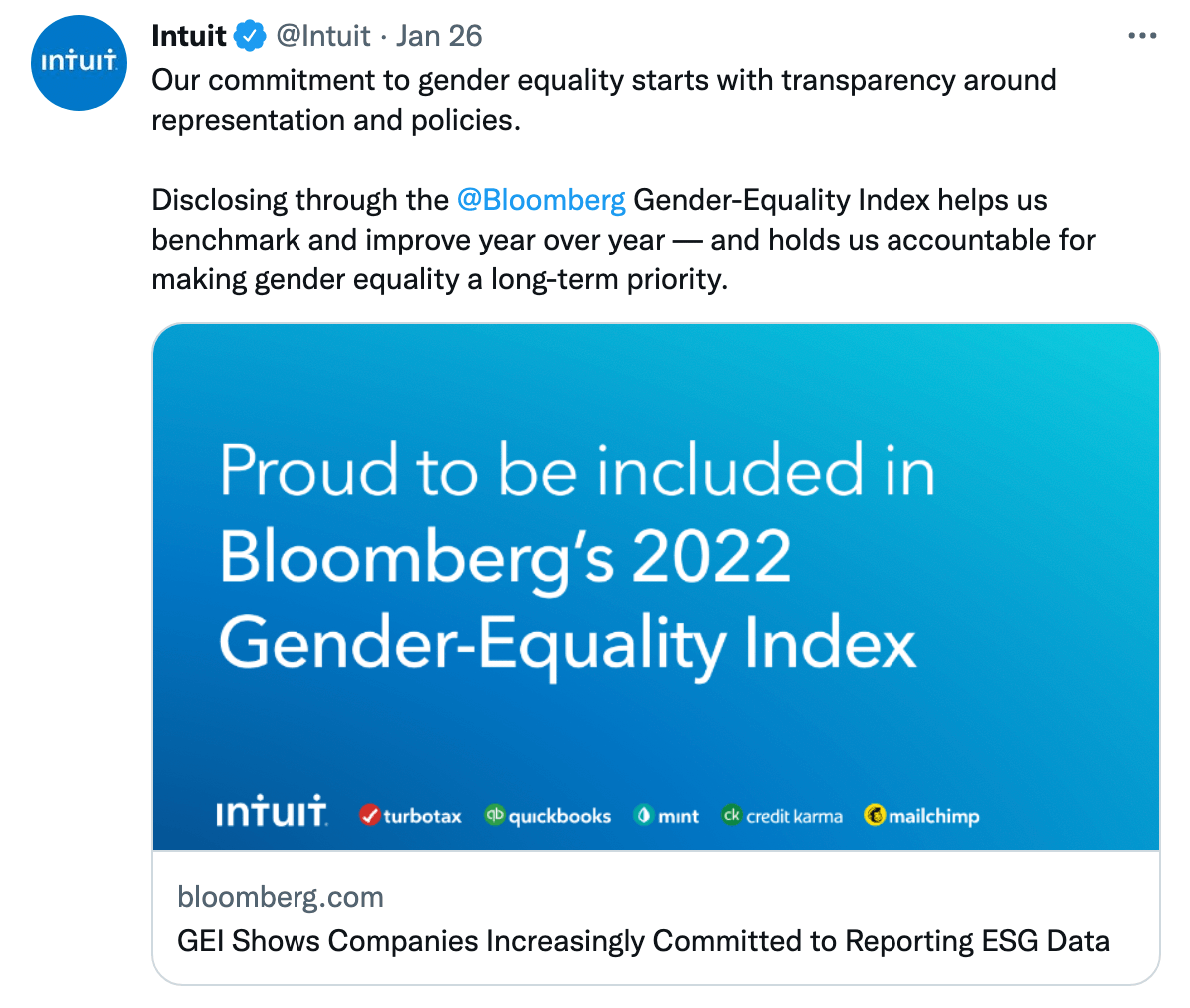
The tweet pictured above discusses the company's commitment to prioritizing gender equality. Others reflect support for issues like inclusive culture, LGBTQ+ equality, and Black health and wellness. By developing internal programs and creating content around these issues, @Intuit does much more than tweet about them.
Get World-Class Marketing Training — All Year Long!
Are you facing doubt, uncertainty, or overwhelm? The Social Media Marketing Society can help.
Each month, you’ll receive training from trusted marketing experts, covering everything from AI to organic social marketing. When you join, you’ll also get immediate access to:
- A library of 100+ marketing trainings
- A community of like-minded marketers
- Monthly online community meetups
- Relevant news and trends updates
Along the same lines, @Dropbox tweets about business-focused topics ranging from organization and communication to entrepreneurship and remote work. But the file-hosting service also tweets about causes that are important to the company, as well as initiatives that matter to its customers too.
The @Dropbox tweet pictured below highlights new partners working with the company's Dropbox Foundation, whose mission is defending human rights. As the tweet explains, each of the partner organizations focuses on a unique cause including “women, children, and LGBTQ+ rights,” reflecting the wide range of social issues @Dropbox supports.

But that doesn't mean every business should take the exact same approach, champion identical causes, or replicate other brands' messaging. Instead, the opposite is true. #RealTalk explores how businesses can create distinctive yet authentic brands on Twitter, with a focus on three key areas:
- Tone: How should your brand voice sound to make your business stand out?
- Topics: What should your brand tweet about and what should you avoid?
- Community: How can your brand engage with its community genuinely?
What do these findings mean for your company's Twitter strategy? Let's take a closer look at each focus area so you can start using the report's insights to your brand's advantage.
#1: Refining Your Brand's Tone
As a marketer, you know how important it is to establish a unique voice for your brand. But does your business sound distinct or does it do and say many of the same things as other brands in your space?
To determine whether brands really sound the same, Twitter devised a test. The social channel took tweets from major brands, removed identifying elements, and asked users to guess which brand had written the original tweet. Only one in three people guessed correctly.
After digging deeper into 3 years of tweets from 20 major brands, Twitter found that during this timeframe, many brands had begun using similar numbers of characters and keywords. In other words, they actually were starting to sound the same.
Study participants often described brand voices as “funny” and “playful.” However, 50% of respondents indicated that brands with heavily humor-dependent voices sounded outdated. Instead, 80% of respondents indicated that they expect brands to adapt their voices to the situation.
That doesn't mean brands can't use humor or tell jokes on Twitter. But it does mean they should be able to respond seriously when situations demand a different tone, without depending solely on humor.
For example, many of @shopify's tweets are playful and align with the eCommerce platform's Twitter bio, which features the pun, “The SaaSy entrepreneurship company.” But just as many of the brand's tweets take a more serious approach to its mission to serve small business customers.

The @shopify tweet above states, “your small business won't be small forever,” providing a simple but necessary word of encouragement. Others quote tweet content from small businesses or share new resources for customers.

Discover Proven Marketing Strategies and Tips
Want to go even deeper with your marketing? Check out the Social Media Marketing Podcast! Publishing weekly since 2012, the Social Media Marketing Podcast helps you navigate the constantly changing marketing jungle, with expert interviews from marketing pros.
But don’t let the name fool you. This show is about a lot more than just social media marketing. With over 600 episodes and millions of downloads each year, this show has been a trusted source for marketers for well over a decade.
The @zapier Twitter account also has a playful tone of voice and frequently shares memes that resonate with the automation platform's tech-savvy customers. But just as many of the brand's tweets have a more serious tone.
For example, the @zapier tweet below touches on a concern that's common to many startups and small businesses: accomplishing critical tasks on a limited budget. The tweet deftly shares DIY resources to help followers get up to speed so they can grow their brands more efficiently.

#RealTalk findings also suggest that brands should have a well-developed sense of who they are. In fact, 90% of study participants expressed that they value brands that know what they stand for and have made a clear commitment. That means brands should feel confident about sharing their missions and values and making these elements distinct parts of their brand voice.
At the same time, brands that speak boldly and embrace what they stand for should be prepared for strong reactions. Although the positive typically outweighs the negative, brands should be ready to address some unpleasant responses.
Before your brand begins tweeting about challenging or polarizing issues, plan how your team should respond to negative feedback. Not every tweet may warrant a reply but having a set of standard responses can help your team engage more efficiently and leave a better impression.
#2: Addressing Social and Cultural Topics
Twitter users increasingly expect brands to join conversations and support causes. But how do you know when it's a good idea for your brand to speak up or when what you have to say isn't relevant to the conversation?
In most cases, it's a good idea to speak up. In fact, 60% of survey participants indicated that they want to hear from brands about political, economic, health, and sociopolitical issues. The #RealTalk report breaks down the data a bit further into topics that people think brands should tweet about, could tweet about, and shouldn't tweet about.
On average, over 35% of respondents stated that they think brands should tweet about social and cultural issues, cultural holidays, and current affairs. Only about 10% responded that brands shouldn't speak out on these topics.
But people don't necessarily want all brands to repeat the same message or share a sentiment that sounds insincere. In addition, they don't want these topics to turn into a sales pitch. Instead, people want brands to explore cultural and political topics in meaningful ways.
For example, the @todoist tweet thread below addresses a sensitive issue—managing anxiety and other mental health concerns while remaining productive at work. The tweet acknowledges the complexity of the issue, recommends a simple solution, and provides a list of steps people can easily follow.
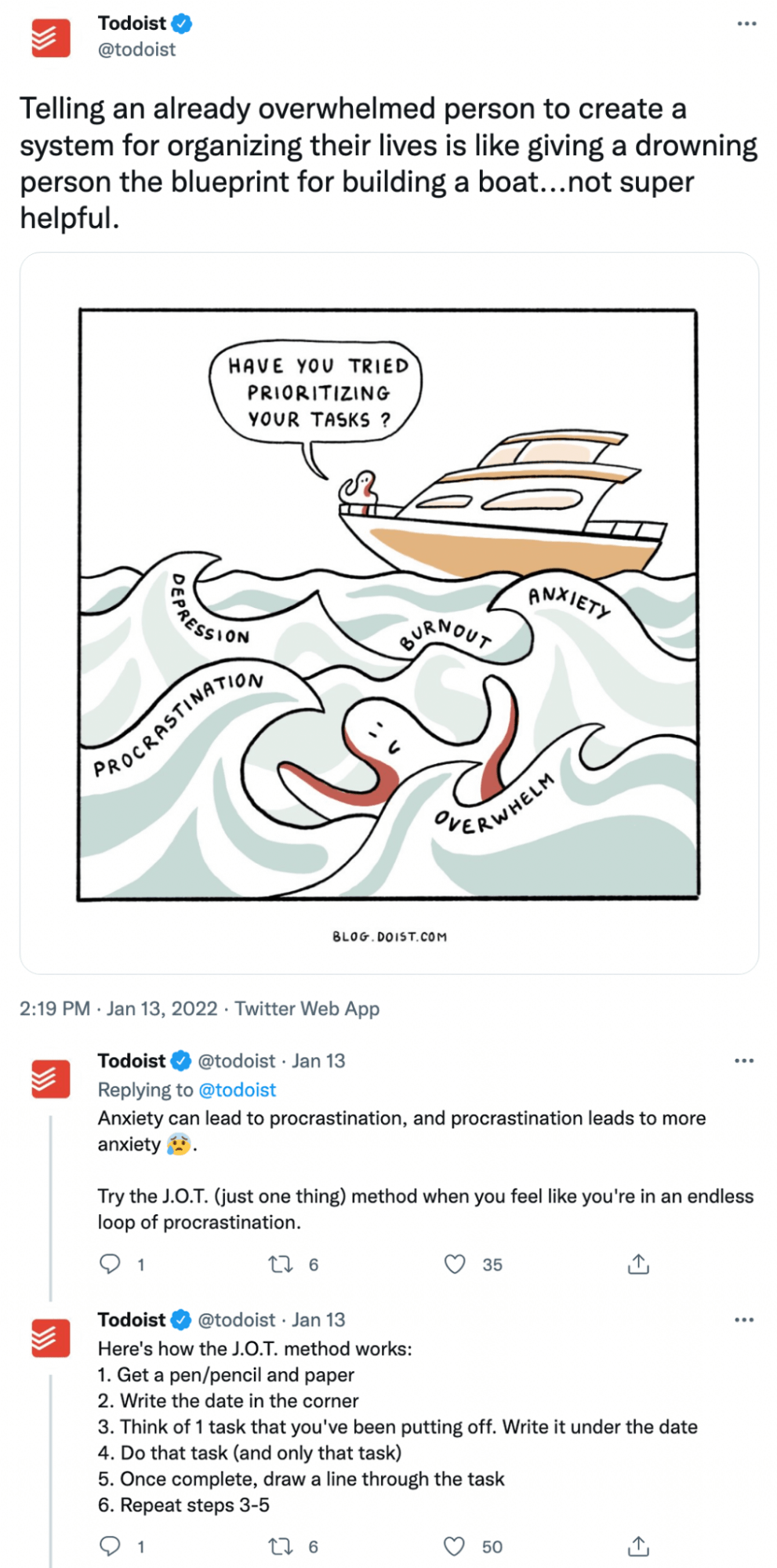
The solution doesn't involve the productivity app's products and the thread doesn't end with a sales pitch. Instead, the @todoist thread wraps up with a suggestion to subscribe to the brand's work/life balance–focused newsletter for additional resources.
If you're not sure what to tweet about a situation or topic, take some time to think. Consider who your customers are and what your brand represents, and how these factors relate to current events.
It's also helpful to think about when would be best to chime in, why the topic matters to your business, and how you can contribute. Then you can compose a message that's worth sharing.
For example, @benandjerrys balances tweets about the brand's ice cream flavors with tweets about current events and sociopolitical issues. In some cases, the ice cream brand's tweets seamlessly blend both topics in a way that appeals to customers while also addressing serious issues.

For example, the @benandjerrys tweet above highlights the brand's newest ice cream flavor, a collaboration with @Mvmnt4BlkLives. As the tweet states, the partnership aims to celebrate the liberation of Black communities while also encouraging customers to take necessary action.
#3: Creating Inclusive Community
Twitter users increasingly expect brands to lean into the diversity of their customer base and team members. In fact, 80% of study participants indicated that they think brand voice should reflect the complete range of diversity.
Many brands serve diverse communities but some tend to group people together rather than acknowledging their distinct identities. Although open-ended messages may seem all-inclusive, being specific is often a better approach. Over 80% of respondents confirmed that they appreciate being addressed as part of a particular community, as long as the brand does so in a respectful way.
One way brands can address distinct communities is by positioning themselves as allies in their Twitter bios. As the study states, allyship keywords increased tenfold between 2020 and 2021.
Another way brands can acknowledge the communities they serve is by showing support all year. That means addressing communities outside of each group's designated week or month or keeping allyship keywords in their bios at all times.
For example, @Dove clearly states its mission in the personal care brand's Twitter profile: “We're advocating for inclusive beauty.” The brand's profile also includes a list of actions @Dove has taken to support its communities, including “empowering young people” and “amplifying underrepresented voices.”
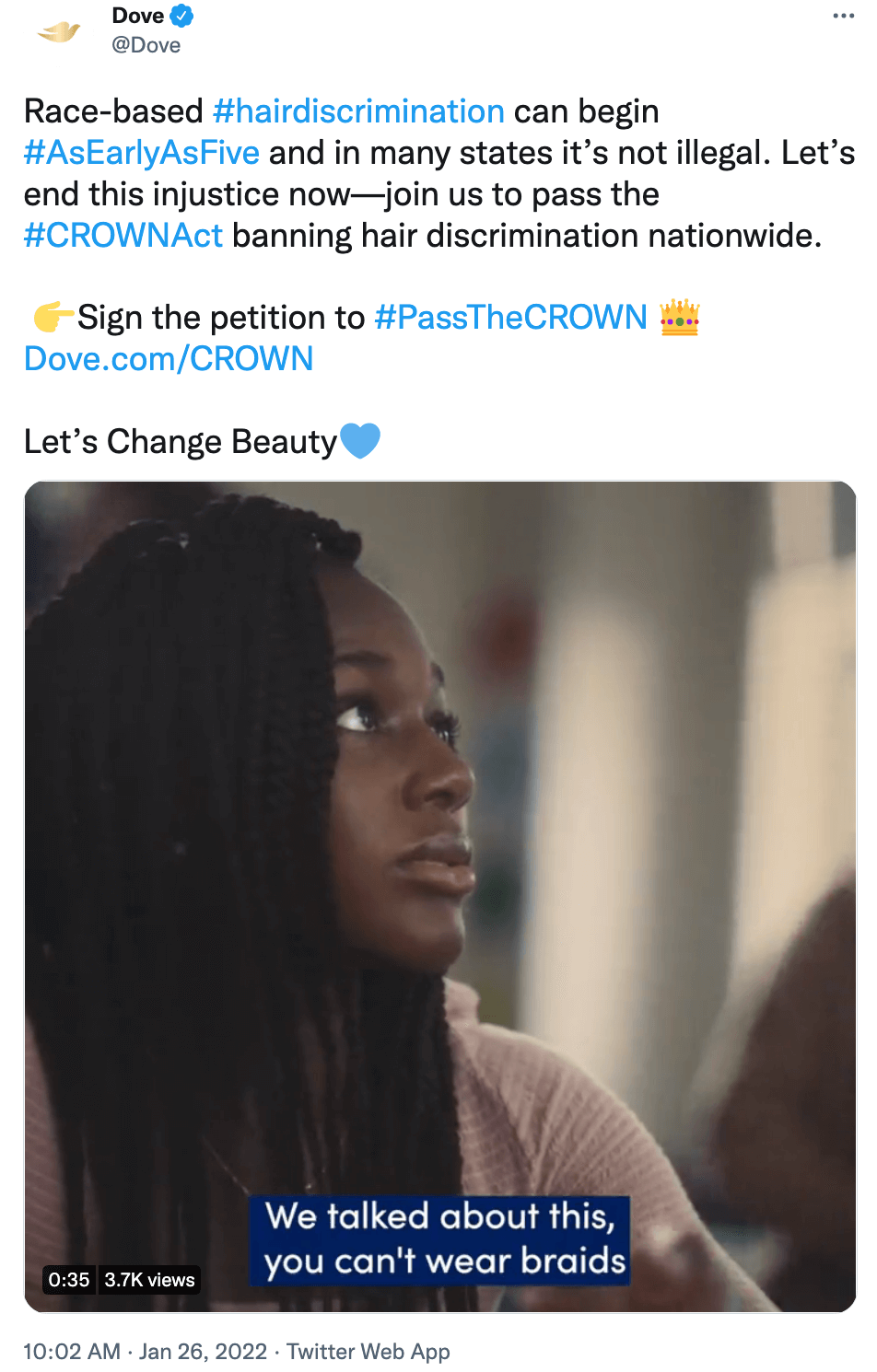
In addition, the brand frequently tweets about its mission to expand the CROWN coalition. For example, the @Dove tweet above uses native video and hashtags to draw attention to the issue of race-based hair discrimination. The tweet encourages people to take action by signing a petition, writing to lawmakers, and learning more about the issue.
In many cases, forming relationships with communities requires a level of work that's much deeper than social media. That means your brand may need to find ways to connect with communities both on and outside of Twitter so you can learn how to support them most effectively. @Dove's CROWN Act initiative is a good example and @Starbucks' volunteer projects are another.
In addition to encouraging coffee runs and promoting the brand's seasonal beverages, @Starbucks regularly tweets about the company's social initiatives. For example, the @Starbucks tweet below highlights the company's partnerships with youth-focused volunteer organizations.

The tweet encourages followers to join the company by volunteering offline, where they can work together to strengthen communities in need. By tying an important cause to Martin Luther King, Jr. Day, the brand can effectively tweet about a timely event in a way that supports its communities and remains relevant to its customers.
Conclusion
As the #RealTalk report shows, people have increasingly high expectations for brands on Twitter. By taking care to give your brand a distinct voice and speaking up about topics and for communities that matter to your team, you can build a better brand presence on Twitter and start exceeding your customers' expectations.
Get More Advice on Twitter Marketing
Stay Up-to-Date: Get New Marketing Articles Delivered to You!
Don't miss out on upcoming social media marketing insights and strategies! Sign up to receive notifications when we publish new articles on Social Media Examiner. Our expertly crafted content will help you stay ahead of the curve and drive results for your business. Click the link below to sign up now and receive our annual report!
Attention Agency Owners, Brand Marketers, and Consultants

Introducing the Marketing Agency Show–our newest podcast designed to explore the struggles of agency marketers.
Join show host and agency owner, Brooke Sellas, as she interviews agency marketers and digs deep into their biggest challenges. Explore topics like navigating rough economic times, leveraging AI, service diversification, client acquisition, and much more.
Just pull up your favorite podcast app, search for Marketing Agency Show and start listening. Or click the button below for more information.

